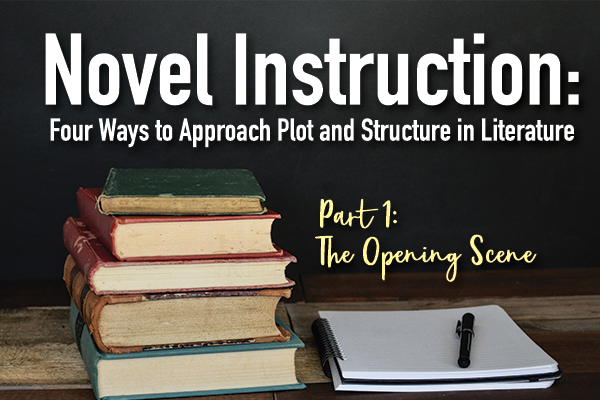
Our reading habits are changing. This has a lot to do with what we are reading. Tweets, posts, snaps, infographics, and other contemporary text types are ideal for communicating ideas quickly and visually. They have a place in our society — and in our classrooms, too — but they are not substitutes for actual literature.
There are important life and literacy skills students can gain from the kind of reading experience that novels provide. Great literature can spark imagination, foster empathy, and reward deeper analysis.
Successful novels are cooked up from such ingredients as plot and structure, characterization and point of view, setting and genre, main idea and theme, and author’s craft. The article below is part of series that offers ideas for examining these literary elements as you teach novels in your classroom.
Over the next four blog posts, we will describe four ways to approach the classroom analysis of plot and structure in just about any novel. The first approach is to use the opening scene. Use the ideas below to create classroom activities or to engage your students in whole-class or small-group discussions.
The Opening Scene
When we crack open a book and begin reading, it is as if a door to a new world has been opened. The first few pages of the novel are our first glimpses into this world, and so authors want us to be intrigued by what we see. Use this idea as a basis for examining a novel’s opening.
Basic Questions:
- What happens in this first scene?
- In what setting does this first scene take place?
- Who is the narrator? Is this narrator a character in the book?
- Which characters do we meet? What do we learn about the appearances, personalities, and backgrounds of these characters?
The Big Question: What purpose (or purposes) does the opening scene serve? Opening scenes can . . .
- introduce us to the novel’s narrator (e.g., The One and Only Ivan)
- reveal a character or narrator’s defining trait (e.g., Wonder)
- establish a relationship between characters (e.g., Because of Winn-Dixie)
- describe a physical setting (e.g., Holes)
- depict a life-altering event (e.g., Hatchet)
- construct an alternate world (e.g., The Giver)
- do all of the above
- do something else entirely
Dig Deeper:
- How would you describe the voice of the narrator?
- What do you notice about the language the author/narrator uses?
- How would you describe the mood of the opening scene?
- What effect does this opening scene have on the reader? What did the author do to create this effect?
- What predictions about the book can you make based on this opening scene?
Get Graphic: Consider creating an organizer based on the visual of a door or window. For younger students, create a large door drawing that is divided into three panels (one each for plot, setting, and characters). For older students, draw a set of doors or windows with questions on them.
Make a Connection: Ask students to name a book or movie that they think has a very memorable opening scene. Student choices are their opinions. However, they must support those choices with reasons that are not just opinions. For example, they can’t simply say that an opening scene is “good” or “exciting.” Instead, they must explain what the author or filmmaker specifically did to make the opening scene good or exciting.
Next week: Part 2—An Important Scene
